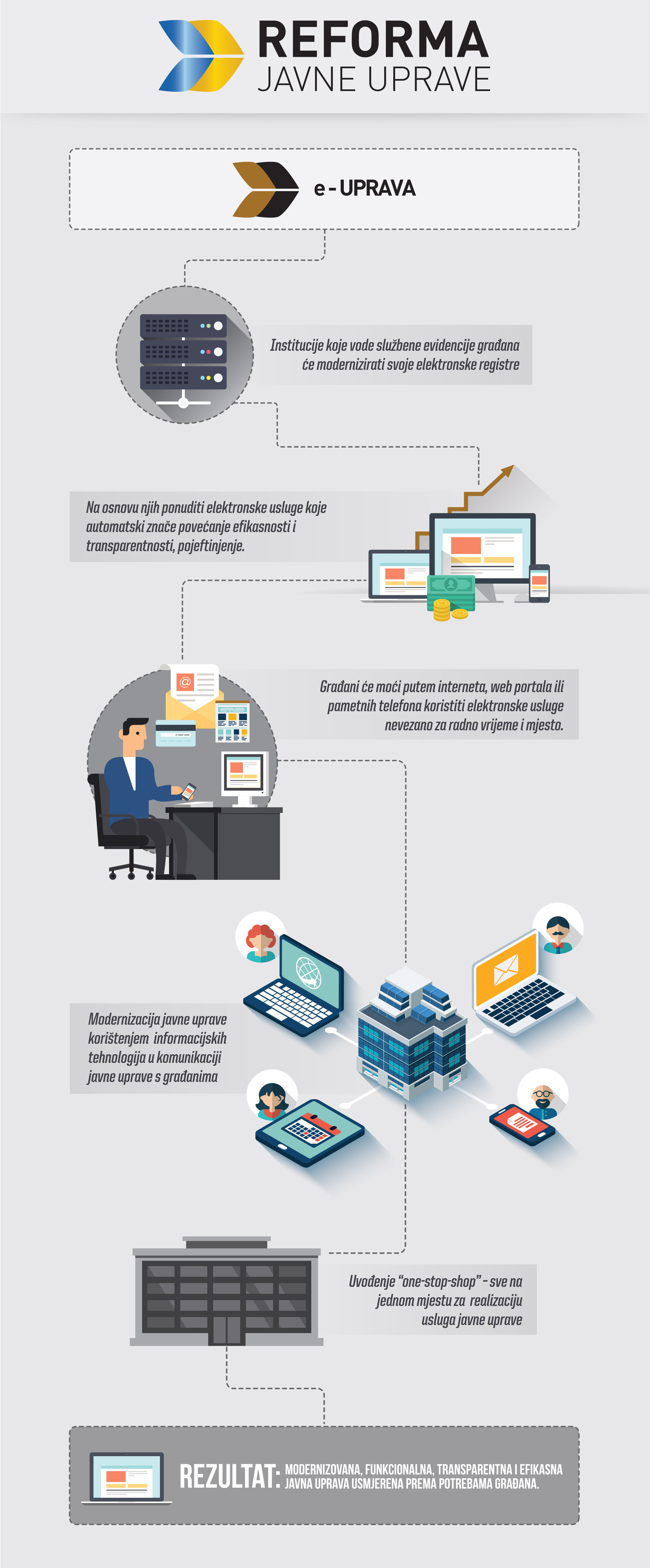| 1. General policies, regulations and standards |
| 2. Capacity building |
| 3. ICT infrastructure |
| 4. Information systems, e-portals and e-services |
The reform area of e-administration (in the “original” Action Plan 1 was called “Information technologies”) is connected practically with all other areas of public administration reform. The Action Plan in the reform field of e-administration was created on the basis of the understanding that e-administration is not only a matter of information technology, but a much broader approach that includes the analysis of business processes, their simplification and optimization, their standardization, which usually requires amendments to various laws and by-laws in public administration. Computerization should follow only at the end of all these activities.
In the first sub-chapter “general policies, regulations and standards”, special emphasis is placed on the establishment of a system for accreditation and supervision of digital certificate certifiers as a fundamental condition for the development of electronic business.
It is necessary to establish institutions (agencies) that will control certifiers and issue accreditations. In this general sub-chapter, activities in the field of IT security and risk management are foreseen – the introduction of a permanent process of risk analysis in all institutions, the establishment of CERT (a team for rapid response to emergencies), and the adoption of IT procurement standards is envisaged (for example defining a standard workstation for different types of jobs) that would significantly contribute to the rationalization of public procurement in the field of IT equipment (hardware and software) and services.
In the second sub-chapter of the reform area “e-administration”, we are talking about strengthening human capacities in this area, where it is necessary to establish a strong central unit for e-administration at all levels of government. The third subchapter talks about information and communication infrastructure, which is of essential importance for the development of e-government. Without infrastructure (network, servers, data centers, etc.), it is not possible to develop electronic business.
The fourth subchapter is intended for the development of information systems and e-services. Centers for e-government as key responsible institutions in this area will define a common framework and standards of information architecture as well as a framework for interoperability. E-government does not mean only electronic business of public administration with citizens and business entities (which in theory is called business “government to citizens” and “government to businesses” or “G2C” and “G2B”), but also electronic business within the public administration (“government to government” or “G2G”).
The list of goals in the reform field of e-government ends with electronic information and services for citizens and business entities. Information and services on the portals significantly improve the availability of services for users, they shorten the time required to perform administrative procedures, and in addition they standardize processes. In the Action Plan, e-government portals are set as the basis for offering information and services. In this way, electronic information and services will be available under the “all in one place” system.

